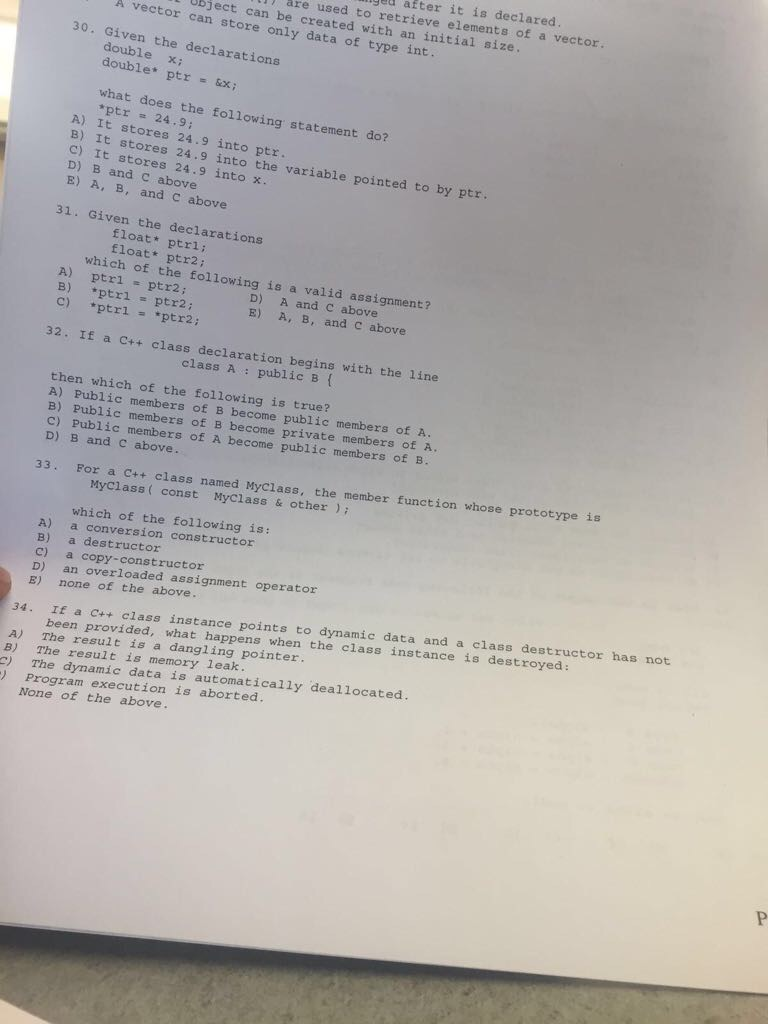
Given the declarations double x: double* ptr = &x: What does the following statement do? *ptr = 24.9: A) It stores 24.9 into ptr. B) It stores 24.9 into the variable pointed to by ptr. C) It stores 24.9 into x. D) B and C above E) A, B, and C above Given the declarations float * ptr1: float * ptr2: which of the following is a valid assignment? A) ptr1 = ptr2: B) *ptr1= ptr2: C) *ptr1 = *ptr2: D) A and C above E) A, B, and C above If a C++ class declaration begins with the line class A: public B { then which of the following is true? A) Public members of B become public members of A. B) Public members of B become private members of A. C) Public members of A become public members of B. D) B and C above. For a C++ class named MyClass, the member function whose prototype is MyClass(const Myclass & other): which of the following is: A) a conversion constructor B) a destructor C) a copy-constructor D) an overloaded assignment operator E) none of the above. If a C++ class instance points to dynamic data and a class destructor has not been provided, what happens when the class instance is destroyed: A) The result is a dangling pointer. B) The result is memory leak. C) The dynamic data is automatically deallocated. D) Program execution is aborted. E) None of the above.
Expert Answer
30)
Ans: b) it stores 24.9 into the variable pointed to by ptr
31)
Ans: d) A and C above
32)
Ans: D) Bothe B and C
33)MyClass(const MyClass & other)
Ans: c) a copy constructor.
34)
Ans: c)The dynamic data is automatically deallocated.

